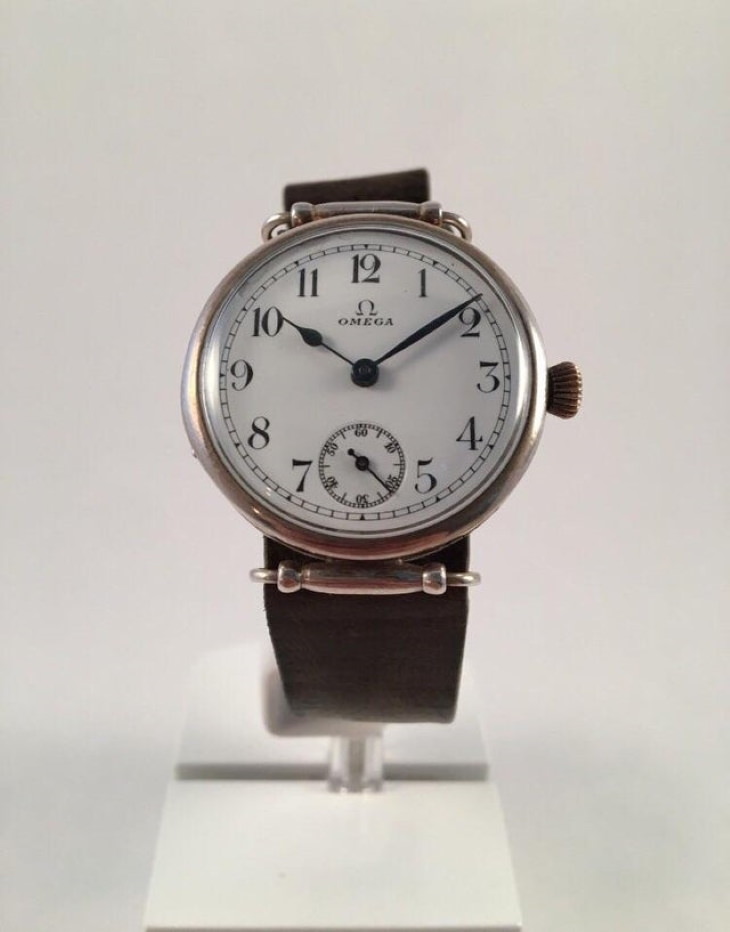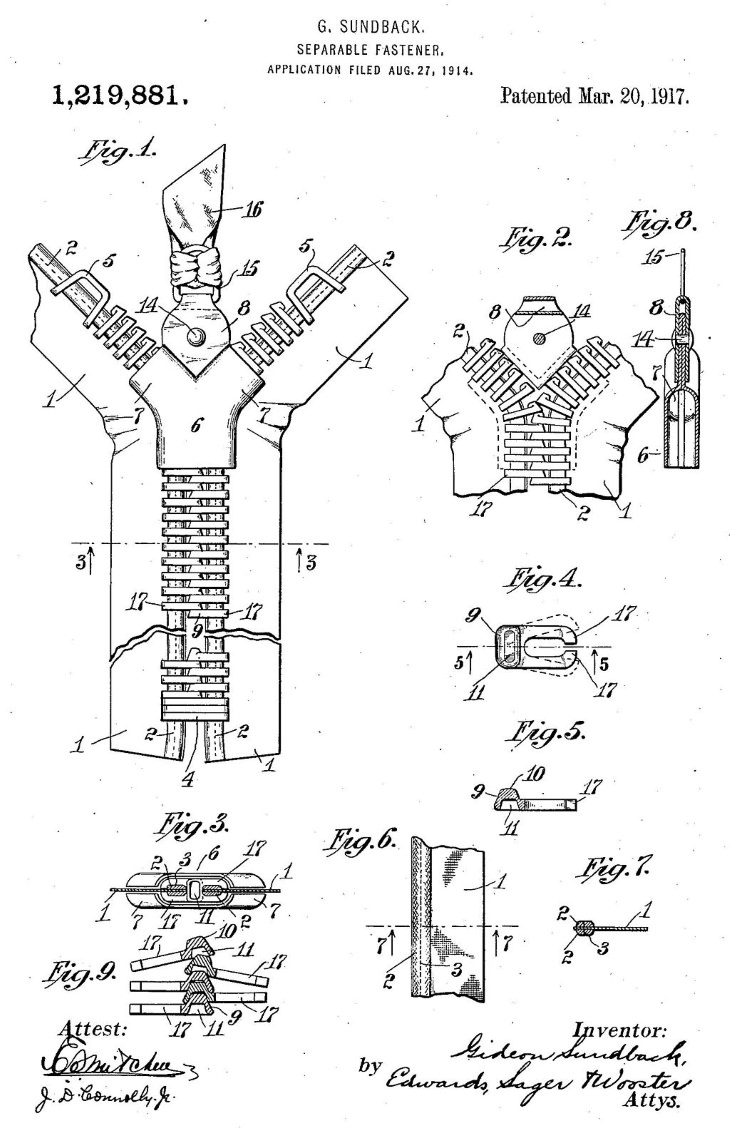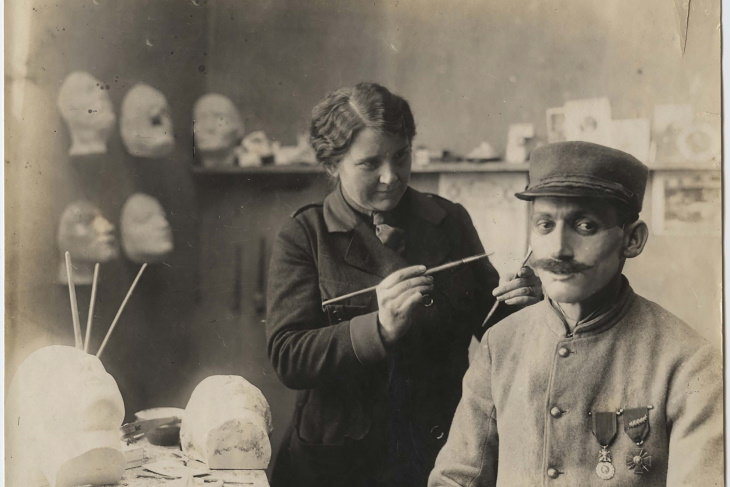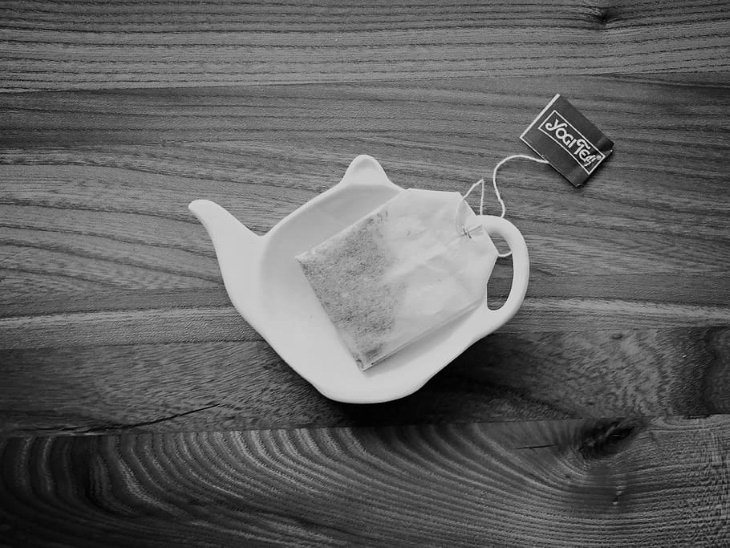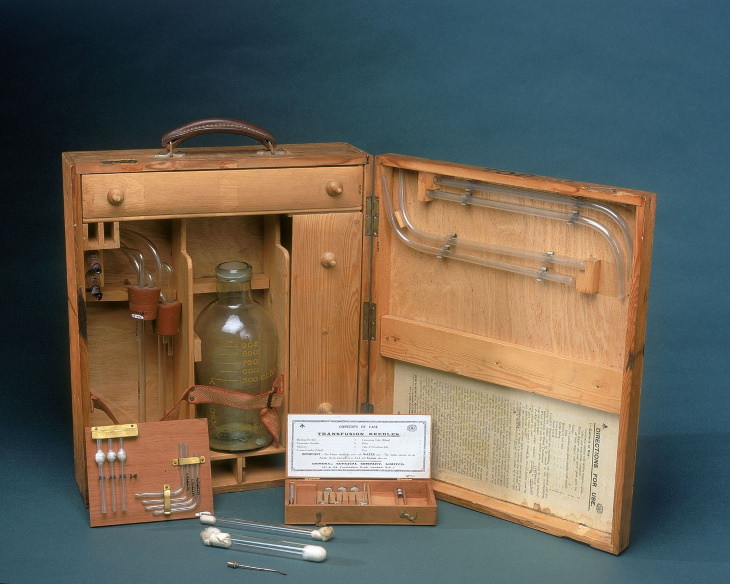1. Trench Coats
During WWI, when trench warfare was first introduced, heavy serge coats were no longer practical for soldiers, and in the late 19th century, two companies invented a new, water-resistant and lightweight fabric, which they began to use in the production of a new style of coat uniform for British soldiers.
The two companies that developed these novel overcoats were Burberry and Aquascutum, and these garments were especially convenient because they were water-resistant, lightweight, and featured large pockets, rings, and flaps, which served as storage for maps, weapons, and personal belongings. Soon enough, these garments were dubbed "trench coats", the two companies started mass-producing slightly altered models of these coats to the general public, and they became a real fashion statement.
2. Wristwatches
A 1916 Omega Wristwatch Image Source:
Reddit
Until WWI, wristwatches were considered a women's accessory, and men widely favored pocket watches. However, pocket watches became inconvenient in the trench and air warfare, where time and precise planning were crucial, so for convenience's sake, pilots and commanders started wearing so-called "trench watches".
The name "tench watch" didn't end up sticking around too long, but the practicality of wristwatches changed men's perspective on the accessory, and by 1916, men's wristwatches were already mass-produced.
3. Zippers
The original patent for the zipper by Gideon Sunbacks (1917)
If you ever wondered whom to thank for the invention of the zipper, the man who patented the creation of what he called "a hookless fastener" is Gideon Sunback. These first zippers were used in soldiers' money belts, flying suits of pilots, and even galoshes.
The name "zipper" we use today was coined in 1923 by the B.F. Goodrich Company, and since 1925, zippers started to be used in mass clothing manufacture, with the first known articles of clothing made with zippers being leather jackets.
4. Drones
Unmanned aircraft are used for so many things nowadays: research, warfare, agriculture, and photography, just to name a few. But they began as army machines, capable of dropping torpedoes on the enemy. Even Nikola Tesla toyed with the idea of unmanned army vehicles, but the first engineer to actually develop an unmanned aerial torpedo was Ohio-based inventor and engineer Charles Kettering.
Kettering managed to build such a machine in 1918. It was called the "Kettering Aerial Torpedo", or the "Kettering Bug", and had cardboard wings and a wood laminate and paper-mâché fuselage. Kettering even tested the machine to strike a target at a distance of 120 km (75 miles), but the device didn't end up being used during WWI because, by the time the Kettering bug was developed, the war had already ended.
5. Daylight Savings
Shifts in daylight times have been evident to people for centuries, but the idea to add an extra hour of daylight when the sun starts to set earlier by shifting the clock by one hour was first implemented in the spring of 1916 in Germany. At first, this was a wartime measure, employed to save coal, but most European countries soon followed suit, and by 1918, even the United States had officially adopted daylight savings. The war has long ended, but we still use this technique to stretch out the daylight hours.
6. Paper Tissues and Sanitary Pads
Paper tissues and sanitary pads were originated at the war front, both starting off as a more absorbent and economical version of cotton used by American Red Cross nurses to dress wounds. The product was first manufactured by the Kimberly-Clark company under the name "cellucotton".
However, the nurses knew better than to just use the cellucotton pads to dress wounds, and after the war, the company cleverly started selling surplus products left after the war in 1920 under the name "Kotex". It took some time for the public to catch on to the product, but when they did, the sales skyrocketed, and in 1924, Kimberly-Clark launched a second product that was intended to remove makeup - "Kleenex".
Just a few years later, the company noticed that women used kleenex for more than just makeup removal, and the product was re-marketed as a disposable tissue alternative, which it remains to this day.
7. Modern Plastic Surgery
The very first attempts at mending unsightly facial wounds and even altering the shape of facial features date back millennia, but modern plastic surgery techniques are widely believed to have begun with one man - an otolaryngologist from New Zealand named Harold Gillies.
Today, Gillies is widely known as the father of plastic surgery, and this is largely thanks to the surgical techniques he developed following WWI in his London hospital. The skin graft and other techniques Gillies used to cover up soldiers' wounds helped over 5,000 soldiers feel more confident with their appearance, and the plastic surgeon is believed to have conducted over 11,000 surgeries.
8. Tea Bags
The first tea bags were made of fabric and were handsewn, and a New York City-based company was the first to manufacture this product, but it wasn't particularly popular, likely because of its high price. However, the concept was then picked up by a German company called Teekanne, and their product gained popularity, and in 1929, Teekanne even created the first tea bag packing machine, which helped to significantly bring down the cost of tea bags and further expanded its marketing success.
9. Pilates
Joseph Hubertus Pilates at age 52 and 82 Image Source:
Reddit
This popular exercise technique likewise started during WWI when Joseph Hubertus Pilates, a circus performer, and boxer who was German but worked in Great Britain, was put in an internment camp on the Isle of Man. During his internment, he developed his exercise technique inspired by yoga, bodybuilding, and martial arts, to strengthen and train his body.
After the war, Pilates moved to New York City, where he opened a fitness studio that was named after him in 1925, where he taught students this technique he called Contrology. The technique became wildly popular by the 1930s, and pilates, as it would be known, grew into a whole branch of fitness practiced worldwide today.
10. Blood Banks
Blood transfusions and blood banks are a routine encounter in hospitals nowadays, and we can hardly imagine modern medicine without the use of blood transfusions. However, this wasn't the case at the turn of the 20th century, when blood types were just discovered. The new techniques of refrigeration further pushed the capability of doctors to collect and preserve blood for up to 28 days. This ultimately led to the creation of the first blood bank in 1917 under the initiative of Captain Oswald Robertson, an American doctor who worked for the British Army at the time.
Related Articles:


